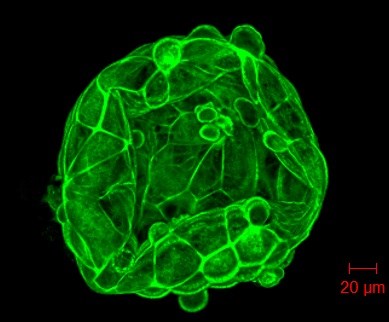Facts:
Main applicant: Denise Laskowski, Dept. Clinical Sciences, SLU.
Co-applicants: Theodora Kunovac Kallak, Dept. Women's and Children's Health, UU and Ylva Sjunnesson, Dept. Clinical Sciences, SLU.

The use of in vitro models has been a successful tool for studying the impact of different factors on early development (from oocyte maturation until the blastocyst staging), in order to predict the outcome in the offspring. Factors such as insulin, environmental toxins such as PCB126 (3,3',4,4',5-Pentachlorobiphenyl), PFOS (perfluorooctyl sulfonate) or cadmium are well studied substances with predictable and known effects on gene expression. Their known action on the gene level makes them valuable for setting up methods since such methods could be validated with already published data of known effects.
The connections between reproduction, toxicology and metabolism are a really interesting and emerging research field as fertility is decreasing in our modern society and the reasons for that are only partly explained. Contamination with different toxins could influence the reproduction of both humans and wildlife.
The in vitro embryo lab at Dept Clinical Sciences, SLU, has excellent expertise and equipment to produce bovine and porcine embryos for research purposes. Until now, descriptive and morphological studies have been performed at SLU, while gene expression analyses have been performed abroad. This project is a collaboration for performing gene expression analyses (quantitative real-time PCR for expression analysis of target genes, sequencing) in collaboration with Rudbeck Laboratory at Uppsala University.
Limitations for gene expression analyses in early embryos include the low number of cells per embryo (around 100-150 on day 8) and the time-consuming, high input of work of a skilled person to produce the embryos (in total 8 days with different steps to perform under several days) and the high costs for this type of analyses.
The aim of the project is to establish well working methods for gene analyses and result interpretation. RNA will be extracted at the lab at Dept Cinical Sciences, SLU, and further processed testing different methods at Rudbecks laboratory at UU. This would in the long run also facilitate the analysis of human embryos, which present a more limited resource for research as both numerical and ethical restrictions apply. In contrast to that, bovine or porcine oocytes for experiments are available at the slaughterhouse for large scale experiments.
Main applicant: Denise Laskowski, Dept. Clinical Sciences, SLU.
Co-applicants: Theodora Kunovac Kallak, Dept. Women's and Children's Health, UU and Ylva Sjunnesson, Dept. Clinical Sciences, SLU.
Centre for Reproductive Biology in Uppsala, CRU
P.O. Box 7054, 750 07 Uppsala, Sweden
Phone: +46 18-67 21 74
www.slu.se/cru | cru@slu.se